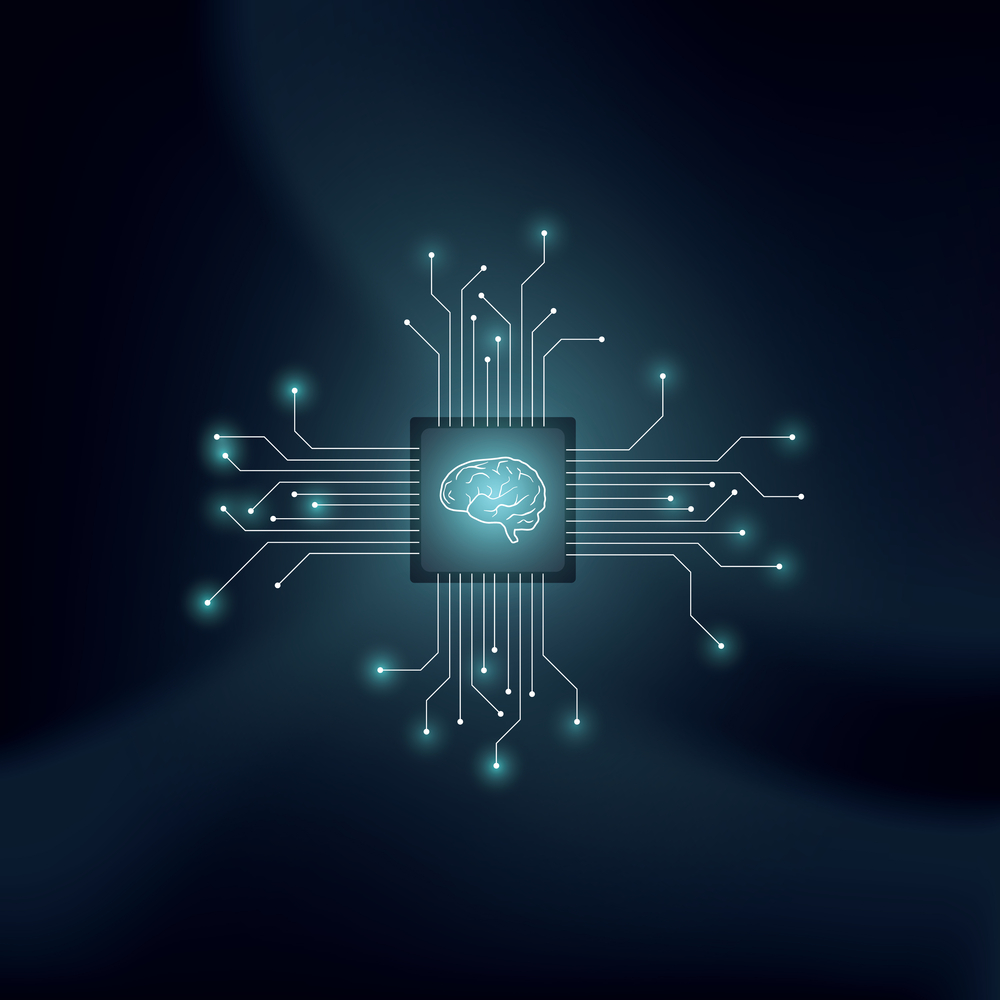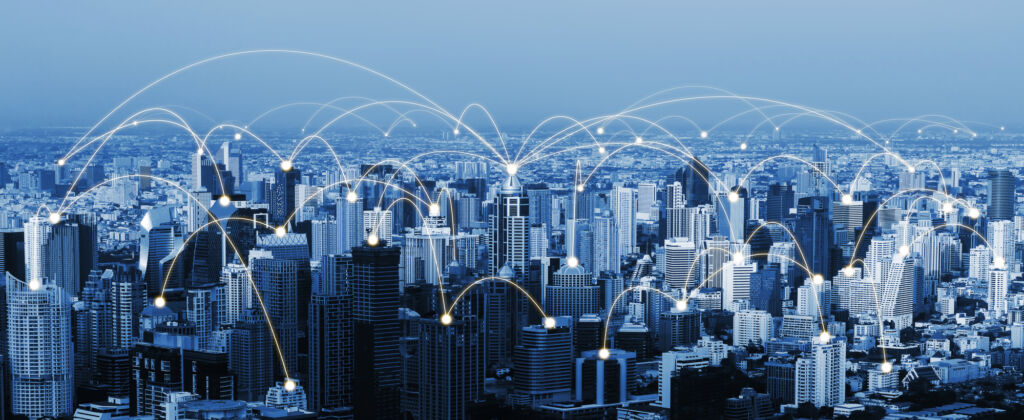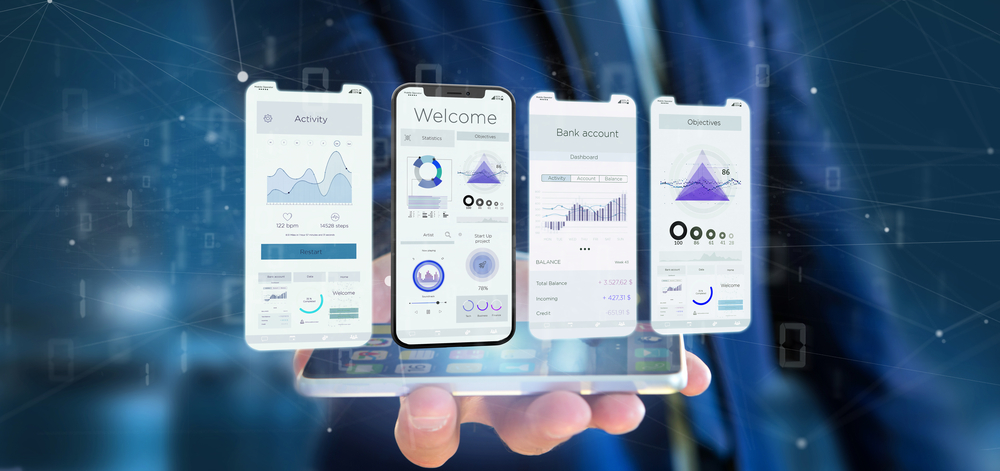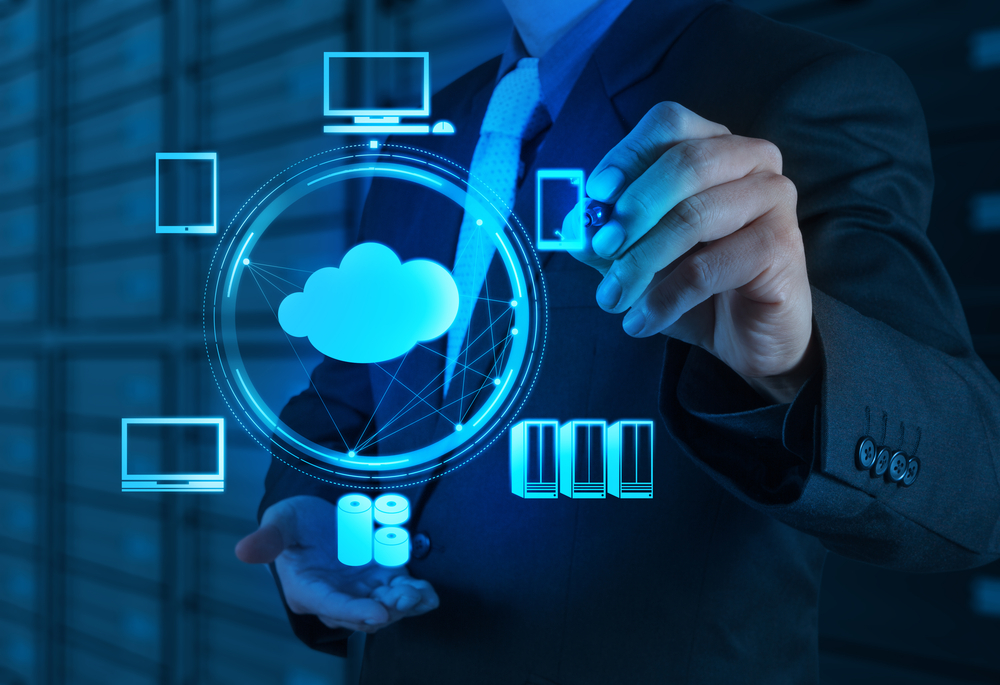The Comprehensive Guide to Software Development Trends in 2023
In the ever-changing world of technology, businesses must stay up-to-date with the latest trends and advancements to remain competitive. As a leading software development company in Chicago, Proper Notion understands the significance of innovation and adaptation. In this comprehensive guide, we’ll dive deep into the most prominent software development trends of 2023, examining their impact on businesses and exploring how you can leverage these advancements to stay ahead of the curve. From AI and Machine Learning to the Internet of Things, mobile app development, cloud computing, and Agile methodologies, we’ll cover everything you need to know to make informed decisions about your next software project.

AI and Machine Learning in 2023
As we move into 2023, AI and Machine Learning (ML) continue to be at the forefront of software development, bringing about significant advancements and innovations. These technologies have already begun transforming the software development landscape, and their impact is only expected to grow in the coming years. Here’s how AI and ML are shaping software development in 2023:
AI-assisted Code Generation and Completion: Advanced AI algorithms can analyze existing code patterns and provide intelligent suggestions for code completion or even generate entirely new code snippets. This not only accelerates the development process but also helps developers maintain consistency in their codebase.
Enhanced Code Review and Quality Control: AI and ML can analyze code for potential errors, security vulnerabilities, and performance issues more effectively than manual methods. This leads to improved code quality, fewer bugs, and more secure software applications.
3. Intelligent Testing and Test Automation: AI-powered testing tools can automate various testing tasks, such as unit testing, regression testing, and performance testing. These tools can also adapt and learn from the software’s behavior, improving their testing capabilities over time and ensuring that the software meets high-quality standards.
4. Predictive Maintenance: ML algorithms can analyze historical data, system logs, and other information to predict potential software failures or performance issues before they occur. This enables developers to take proactive measures, preventing downtime and ensuring that the software remains stable and efficient.
5. Personalized User Experiences: ML can analyze user behavior and preferences to deliver tailored experiences in software applications. This results in higher user engagement, increased satisfaction, and improved customer retention.
6. Advanced Natural Language Processing (NLP): NLP algorithms have evolved significantly, allowing for more accurate and nuanced understanding of human language. This enables the development of more sophisticated chatbots, voice assistants, and other conversational interfaces, providing more natural and engaging interactions between users and software applications.
7. Data-driven Decision Making: AI and ML can process and analyze vast amounts of data, providing insights and predictions that drive better decision-making in software development. This can help businesses optimize their development processes, allocate resources more effectively, and identify potential risks or opportunities.
8. Reinforcement Learning for Adaptive Systems: Reinforcement Learning (RL) is a subset of ML that allows software systems to learn and adapt based on their interactions with the environment. RL can be used to create adaptive software systems that automatically adjust their behavior and performance in response to changing conditions, user needs, or other factors.
AI and ML continue to shape the future of software development in 2023, driving innovation and enabling the creation of more intelligent, adaptive, and efficient software applications. By embracing these technologies, businesses can stay ahead of the curve and ensure their software solutions remain relevant, competitive, and valuable in an ever-evolving digital landscape.
Real-world applications
AI and Machine Learning have been making their mark across various industries, leading to significant improvements in efficiency, decision-making, and user experiences. Here are some real-world applications of AI and ML that showcase their transformative potential:
- Healthcare:
- Diagnostics: AI-powered algorithms can analyze medical images, such as X-rays or MRIs, to detect diseases or abnormalities more accurately and quickly than human experts.
- Personalized medicine: ML models can analyze patients’ genetic data and medical histories to recommend personalized treatment plans and medications.
- Drug discovery: AI can accelerate the drug discovery process by predicting the effectiveness of potential compounds and streamlining the research process.
- Finance:
- Fraud detection: ML algorithms can analyze transaction data to detect fraudulent activities, such as credit card fraud or insider trading, in real-time.
- Algorithmic trading: AI-powered trading algorithms can analyze market data and make trading decisions faster and more accurately than human traders.
- Credit scoring: ML models can analyze applicants’ financial data to predict their creditworthiness, leading to more accurate and unbiased lending decisions.
- Retail:
- Inventory management: AI can optimize inventory levels by analyzing sales data and predicting future demand patterns.
- Dynamic pricing: ML algorithms can analyze factors such as demand, competition, and customer preferences to adjust pricing in real-time.
- Personalized marketing: AI-powered recommendation engines can analyze customers’ browsing and purchase histories to deliver targeted product recommendations and promotions.
- Manufacturing:
- Quality control: AI can analyze production data and images to detect defects or inconsistencies in manufactured products, reducing waste and improving overall quality.
- Predictive maintenance: ML models can predict equipment failures or maintenance needs, preventing downtime and reducing maintenance costs.
- Supply chain optimization: AI can analyze complex supply chain data to optimize production planning, logistics, and resource allocation.
- Transportation:
- Autonomous vehicles: AI and ML enable the development of self-driving cars by processing data from sensors, cameras, and other inputs to make real-time decisions about navigation, obstacle detection, and traffic management.
- Traffic prediction: ML models can analyze traffic data to predict congestion patterns and optimize traffic flow, reducing travel times and fuel consumption.
- Public transportation: AI can optimize public transportation schedules and routes based on passenger demand, improving efficiency and reducing wait times.
- Energy:
- Smart grid management: AI can analyze energy consumption data and predict demand patterns, enabling more efficient and sustainable energy management.
- Renewable energy optimization: ML models can predict the optimal configuration of solar panels or wind turbines based on weather data and other factors, maximizing energy production.
- Education:
- Adaptive learning: AI-powered educational platforms can analyze students’ performance and learning preferences to deliver personalized content and recommendations.
- Automated grading: ML algorithms can evaluate and grade student assignments, reducing the workload for teachers and providing more consistent feedback.
These examples represent just a fraction of the real-world applications of AI and ML across various industries. As these technologies continue to evolve, their potential for transforming businesses and improving lives will only grow.

IoT and Edge Computing in 2023
The Internet of Things (IoT) and Edge Computing are two interconnected concepts that are driving innovation in various industries. Let’s look at their definitions and how they work together.
Internet of Things (IoT): IoT refers to the network of interconnected physical devices that collect and exchange data using sensors, software, and internet connectivity. These devices can range from everyday items like smartphones and wearables to industrial machinery and environmental monitoring systems. The IoT enables the collection of real-time data and remote control of devices, leading to improved efficiency, safety, and decision-making in various applications.
Edge Computing: Edge Computing is a distributed computing paradigm that moves data processing closer to the source of the data, i.e., the edge of the network. This approach minimizes latency, reduces bandwidth requirements, and enhances data security by processing data locally instead of sending it all to central servers or the cloud. Edge Computing is particularly beneficial for IoT applications, where rapid response times and efficient data processing are crucial.
How IoT and Edge Computing Work Together: IoT generates massive amounts of data from numerous connected devices. Transmitting and processing all this data in centralized data centers or the cloud can lead to high latency, increased bandwidth usage, and potential security risks. Edge Computing addresses these challenges by enabling data processing at the edge of the network, closer to the IoT devices themselves.
As we progress into 2023, the Internet of Things (IoT) and Edge Computing continue to gain momentum, driving innovation and shaping the future of various industries. The widespread adoption of IoT devices, combined with advancements in Edge Computing, has led to new opportunities and use cases. Here’s how IoT and Edge Computing are making an impact in 2023:
Enhanced Data Processing and Latency Reduction: Edge Computing allows data processing to occur closer to the source, reducing latency and improving real-time decision-making. This is particularly beneficial for applications such as autonomous vehicles, industrial automation, and real-time analytics, where rapid response times are critical.
Improved Data Security and Privacy: By processing data locally at the edge, businesses can reduce the risk of data breaches and maintain better control over their sensitive information. Edge Computing also enables data processing to comply with local data privacy regulations, addressing concerns about data sovereignty and cross-border data transfers.
Scalable IoT Deployments: Edge Computing provides the necessary infrastructure to support the growing number of IoT devices and their data processing demands. By offloading data processing tasks to edge devices, businesses can reduce the load on central servers and cloud systems, ensuring scalable and efficient IoT deployments.
Energy Efficiency and Sustainability: Edge Computing can help reduce energy consumption and associated costs by optimizing data processing and minimizing data transfers to and from the cloud. This is particularly important for large-scale IoT deployments in industries like agriculture, energy, and manufacturing, where energy efficiency and sustainability are key concerns.
Enhanced Connectivity and Network Resilience: Edge Computing enables more robust and resilient network connections by reducing the reliance on central servers and cloud systems. This is particularly beneficial for remote or challenging environments, such as oil rigs, rural areas, or disaster zones, where maintaining reliable connectivity is crucial.
AI and ML at the Edge: The integration of AI and ML algorithms at the edge enables smarter, more autonomous IoT devices capable of making real-time decisions without relying on constant cloud connectivity. This enhances the capabilities of IoT devices in various applications, such as predictive maintenance, computer vision, and natural language processing.
Smart Cities and Infrastructure: IoT and Edge Computing play a crucial role in the development of smart cities and intelligent infrastructure. They enable real-time monitoring and control of urban systems, such as traffic management, waste management, and public safety, leading to more efficient and sustainable urban environments.
Industrial IoT (IIoT) and Automation: In the industrial sector, IoT and Edge Computing are driving the adoption of advanced automation and monitoring solutions. They enable real-time data processing and control for manufacturing, logistics, and other industrial processes, improving efficiency, safety, and productivity.
IoT and Edge Computing are shaping the future of various industries in 2023, driving innovation, enhancing efficiency, and enabling new opportunities. As these technologies continue to evolve, their potential for transforming businesses and improving lives will only grow.
Mobile App Development in 2023
With the increasing reliance on smartphones, mobile app development remains a critical component of any software development strategy. Proper Notion’s dedicated development teams are well-versed in creating responsive, user-friendly mobile apps that cater to the unique needs of small and medium businesses.
In 2023, mobile app development continues to evolve, driven by technological advancements, changing user expectations, and an ever-growing demand for innovative and engaging mobile experiences. Here are some key trends and aspects shaping mobile app development in 2023:

Cross-platform development frameworks: Cross-platform development tools, such as React Native, Flutter, and Xamarin, have gained significant popularity. These frameworks allow developers to build apps for multiple platforms (iOS, Android, and sometimes web) using a single codebase, reducing development time and cost.
5G technology: The widespread adoption of 5G networks enables faster data transfer speeds and lower latency, which greatly benefits mobile app experiences. This technology enables more reliable connectivity, smoother real-time interactions, and enhanced AR/VR capabilities in mobile apps.
Artificial Intelligence (AI) and Machine Learning (ML): Integration of AI and ML into mobile apps has become increasingly common. This enables features like personalization, predictive analytics, and intelligent automation, creating more engaging and tailored user experiences.
Internet of Things (IoT) integration: As the adoption of IoT devices grows, mobile apps increasingly serve as the control center for these connected devices. IoT integration in mobile apps enables users to monitor and control smart devices, such as home automation systems, wearables, and health monitoring devices.
Augmented Reality (AR) and Virtual Reality (VR): AR and VR technologies continue to enhance mobile app experiences, particularly in gaming, education, and retail sectors. These technologies enable immersive and interactive experiences that can help drive user engagement and retention.
Mobile app security: As cyber threats become more sophisticated, there is a growing focus on mobile app security. Developers are prioritizing secure coding practices, robust encryption, and regular security updates to protect users’ sensitive data and ensure app reliability.
On-demand and instant apps: On-demand apps, which cater to specific user needs, such as food delivery or ride-hailing, continue to grow in popularity. Instant apps, which allow users to try an app without installing it, are also gaining traction, enabling users to experience app features without committing to a full download.
Progressive Web Apps (PWAs): PWAs are web applications that deliver app-like experiences through mobile browsers. They offer advantages such as faster load times, offline access, and reduced data usage, making them an attractive alternative to native apps in some cases.
Dark mode and accessibility: With an increased focus on user experience, many mobile apps now offer dark mode, reducing eye strain and improving battery life. Additionally, developers are paying more attention to accessibility features, ensuring that apps are usable for people with various disabilities or impairments.
Cloud-based mobile app development: Cloud technologies are playing a more significant role in mobile app development. By leveraging cloud infrastructure, developers can build scalable and efficient mobile apps, reducing development time and operational costs.
Mobile app development in 2023 is driven by technological advancements, changing user expectations, and the need to deliver engaging and innovative mobile experiences. By embracing these trends and focusing on user experience, developers can create successful and future-proof mobile apps.

Cloud Computing in 2023
The migration to cloud computing has accelerated in recent years, enabling businesses to scale their operations with ease. Proper Notion software agency specializes in developing cloud-based solutions that ensure data security, high availability, and seamless integration with existing systems.
Cloud computing involves delivering computing services, such as storage, processing power, and software, over the internet. This approach offers numerous benefits, including scalability, cost savings, and improved collaboration.
Cloud computing continues to be a driving force in the digital transformation of businesses across industries in 2023. With rapid advancements in technology and growing demand for scalable, flexible, and cost-effective solutions, cloud computing is evolving in various ways. Here are some key trends and developments shaping cloud computing in 2023:
Hybrid and Multi-Cloud Strategies: Organizations are increasingly adopting hybrid and multi-cloud approaches to leverage the best of different cloud providers and environments. Hybrid cloud combines on-premises infrastructure with public cloud services, while multi-cloud uses multiple cloud providers to meet specific application requirements. These strategies allow businesses to optimize costs, performance, and flexibility while mitigating vendor lock-in risks.
Serverless Computing: Serverless architectures, which abstract the underlying infrastructure management from developers, are gaining popularity. Services like AWS Lambda, Azure Functions, and Google Cloud Functions allow developers to focus on writing code without worrying about provisioning, scaling, or maintaining servers, resulting in reduced operational costs and faster time-to-market.
Containers and Kubernetes: Containerization technology, particularly Docker, has revolutionized the way applications are developed, deployed, and managed in cloud environments. Kubernetes, an open-source container orchestration platform, has become the de facto standard for managing containerized applications at scale, enabling more efficient resource utilization, easier deployment, and improved portability.
AI and Machine Learning Integration: Cloud providers are offering a growing range of AI and ML services, making these advanced technologies more accessible and affordable for businesses. These services include pre-built AI models, custom ML model training, natural language processing, and computer vision, enabling organizations to enhance their applications and drive innovation.
Edge Computing: With the rise of IoT devices and the need for low-latency data processing, edge computing is becoming an essential component of cloud computing. Edge computing brings data processing closer to the source, reducing latency and bandwidth usage. Cloud providers are increasingly offering edge computing solutions to support a wide range of applications, such as autonomous vehicles, smart cities, and industrial automation.
Enhanced Security and Compliance: As cyber threats become more sophisticated and the regulatory landscape evolves, security and compliance remain top priorities for businesses. Cloud providers are investing in advanced security measures, such as encryption, multi-factor authentication, and threat detection, while also offering tools to help organizations meet their compliance requirements.
Cloud-Native Development: Cloud-native development, which involves designing applications specifically for cloud environments, is becoming more prevalent. This approach leverages cloud-specific features and services, such as microservices, containers, and serverless computing, to build scalable, resilient, and efficient applications.
Managed Services and Automation: Managed services, such as database management, DevOps, and infrastructure monitoring, are increasingly being offered by cloud providers, enabling businesses to offload time-consuming tasks and focus on their core competencies. Automation tools, like Infrastructure as Code (IaC) and CI/CD pipelines, are also being widely adopted to streamline cloud infrastructure management and application deployment.
Sustainability and Green Cloud Computing: Organizations are becoming more conscious of their environmental impact, driving demand for sustainable and energy-efficient cloud solutions. Cloud providers are focusing on improving energy efficiency, using renewable energy sources, and adopting carbon-neutral strategies to minimize their environmental footprint.
In conclusion, cloud computing in 2023 is characterized by a diverse range of trends and advancements that cater to the evolving needs of businesses across industries. By adopting these technologies and strategies, organizations can harness the power of the cloud to drive innovation, reduce costs, and remain competitive in an increasingly digital world.
Conclusion
Staying updated on the latest software development trends is vital for businesses to remain competitive and take advantage of emerging opportunities. At Proper Notion, we pride ourselves on our expertise in cutting-edge technologies and methodologies, ensuring our clients receive the best solutions for their needs. If you’re considering software development outsourcing or looking to hire developers for your next project, contact us today to learn more about how we can help your business grow and succeed.